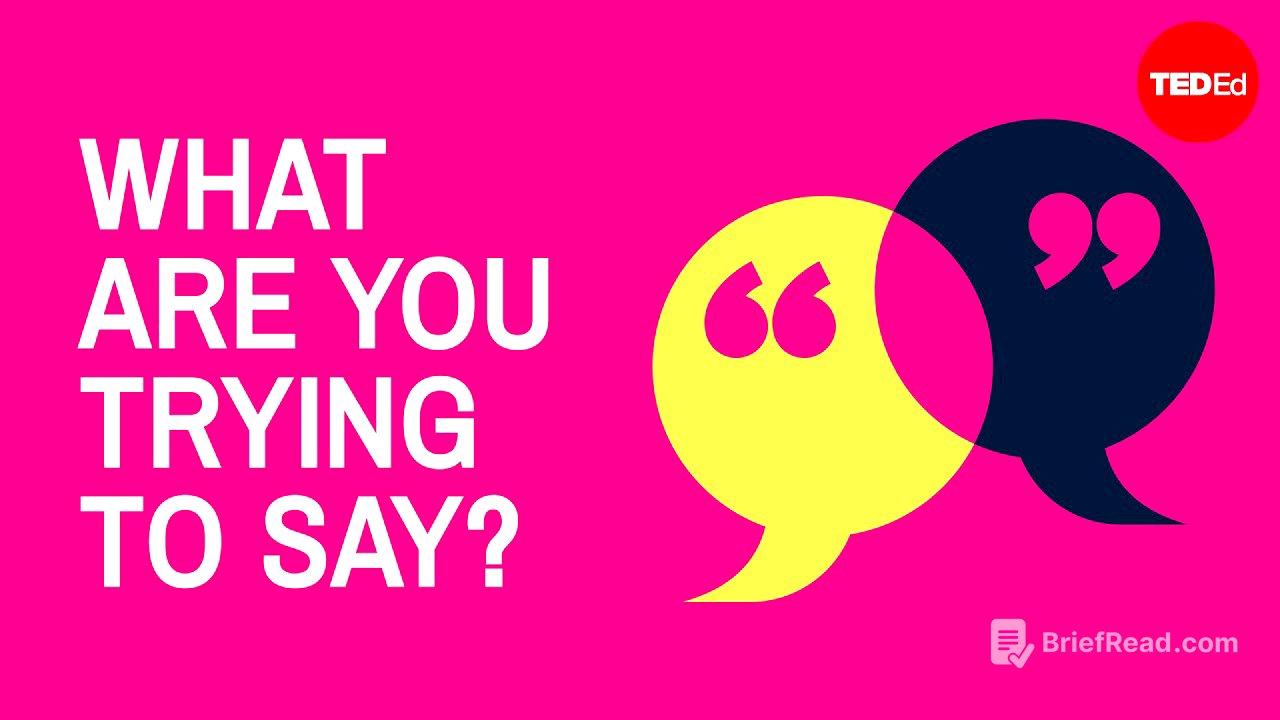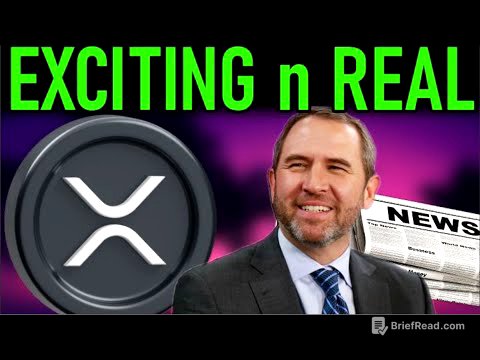TLDR;
This video explains how to create a meaningful and impactful talk by focusing on a central idea called a "throughline." It emphasizes the importance of planning the talk around this throughline, ensuring that all elements connect to support the main message. The video advises against overstuffing the talk with too many topics and instead suggests exploring a single, connected thread thoroughly. It also provides guidance on how to identify and refine your throughline, including asking key questions and testing it out on others.
- Focus on a central idea or "throughline" to tie everything together.
- Avoid overstuffing the talk with too many topics; instead, explore a single thread in depth.
- Ensure every element of the talk connects to and supports the main idea.
- Refine your throughline by stating it in 15 words or less and testing it on others.
Introduction: The Importance of a Throughline [0:07]
The video starts by highlighting the uniqueness of individual experiences and the value of sharing them with an audience. It emphasizes that the key to a successful talk lies in having a well-defined plan that connects all elements to deliver a meaningful message. The most common reason talks fail to resonate is the absence of a proper plan for the talk as a whole, specifically lacking a "throughline."
Defining the Throughline [0:56]
The throughline is defined as the main idea that ties together everything in a talk, ensuring that all content supports the central message. While a talk can cover multiple topics or stories, each element should connect to reinforce the throughline. The video contrasts a vague talk introduction with one that clearly states the throughline, illustrating how the latter is more engaging for a general audience. Examples of throughlines from popular TED Talks are provided, such as "More choice actually makes us less happy" and "Vulnerability is something to be treasured, not hidden from."
The Throughline as a Path [2:41]
The throughline is likened to a path that the speaker and audience journey on together, ensuring a logical progression and a satisfying conclusion. Following this path prevents disjointed leaps and guides both the speaker and the audience to a shared destination. The video underscores the importance of making sure that everything included in the talk links back to the main idea.
Avoiding Overstuffing and Under-Explaining [3:20]
The video cautions against the common mistake of trying to cover too many points briefly, which results in a lack of depth and impact. It introduces the equation "overstuffed equals under-explained," emphasizing that meaningful talks require time to show why the topic matters and to flesh out each point with examples, stories, and facts. To deliver a truly effective talk, it may be necessary to reduce the number of topics covered and instead focus on a single, connected throughline that can be presented thoroughly.
Focusing and Refining Your Throughline [5:09]
Choosing a throughline helps in determining which topics to include and exclude, filtering out anything that doesn't connect to the main idea. A useful exercise for focusing the throughline is to articulate it in 15 words or less. The video presents a series of questions to help refine the throughline, such as whether the topic is personally meaningful, inspires curiosity, offers a new perspective, and can be adequately explained with examples within the given time.
Testing Your Throughline [6:18]
The video recommends testing the throughline by articulating the entire talk out loud to someone, which helps identify areas that are clear, need more explanation, or should be cut. This process ensures that the central message lands more powerfully. Once the throughline is established, you can then plan what to attach to it, remembering to only cover as much as you have time to explore in depth.









